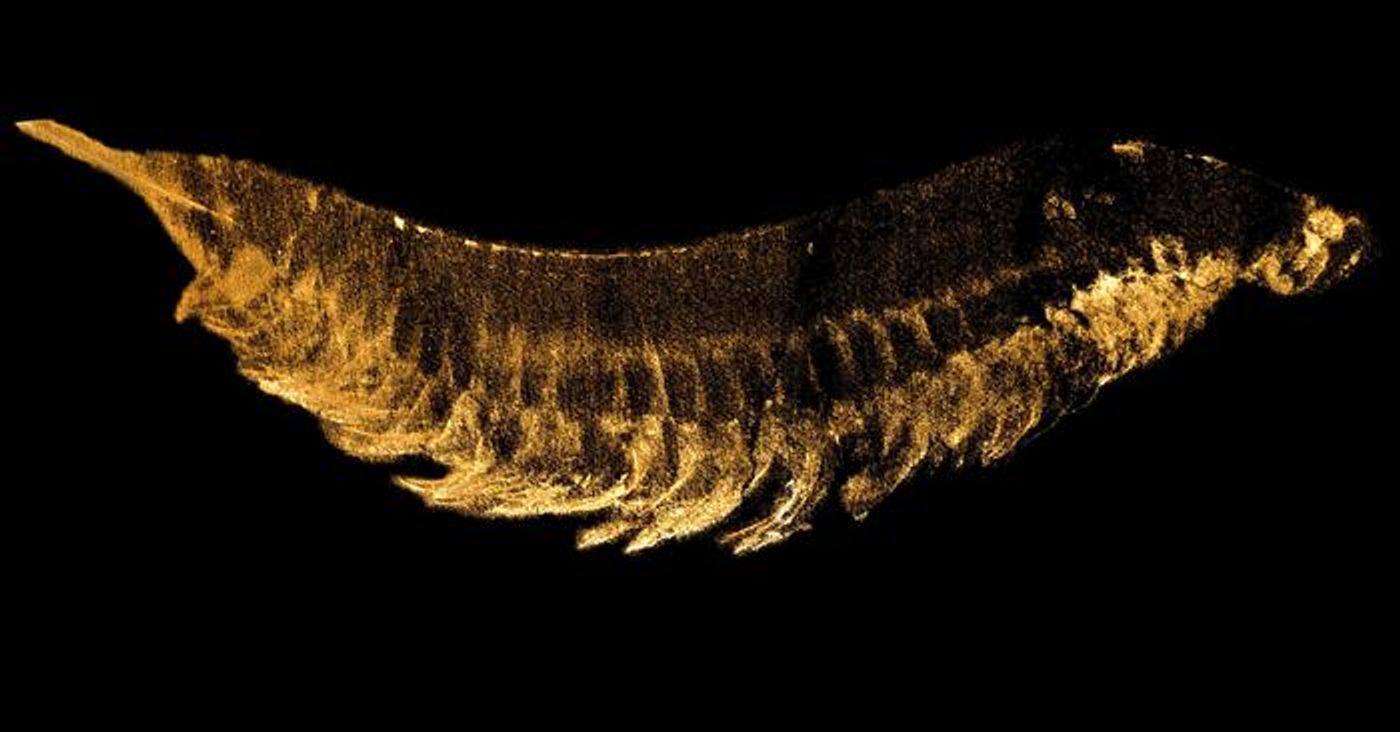CT Imaging Reveals 520-Million-Year-Old Arthropod Fossil's Hidden Features
A recent study published in Current Biology discusses an almost perfectly preserved, 520-million-year-old arthropod fossil known as Kylinxia that was analyzed using a CT scanner, and could shed light on the evolution of arthropods, which scientists currently have gaps in their evolutionary track. This research was an international collaborative effort between several institutions and holds the potential to help scientists better understand how complex life first developed in the Earth’s oceans a half-billion years ago.
CT scan image of the fossil Kylinxia zhangi that was collected from southern China. It is about the size of a large shrimp, with its front end at the right. (Credit: Dr. Yu Liu, Yunnan University)
“The preservation of the fossil animal is amazing,” said Robert O’Flynn, who is a PhD student at the University of Leicester and lead author of the study. “After CT-scanning we can digitally turn it around and literally stare into the face of something that was alive over 500 million years ago. As we spun the animal around, we could see that its head possesses six segments, just as in many living arthropods.”
What makes this finding unique is the near-absolute preservation of the fossil, whereas fossilized arthropods have traditionally consisted of only their hard skeletons, with the most famous arthropod in the fossil record being trilobites. Another unique aspect of this finding is the location the fossils, as they were discovered by a team of Chinese scientists in the Cambrian Chengjiang biota of China’s Yunnan Province, which is where more than 250 surprisingly preserved fossil species have already been found. This finding could also help translate the evolutionary history of arthropods, as well.
“Robert and I were examining the micro-CT data as part of his doctoral thesis in the hope of refining and correcting previous interpretation of head structures in this genus, Kylinxia,” said Dr. Yu Liu, who is from the Yunnan Key Laboratory for Palaeobiology and a co-author on the study. “Amazingly, we found that its head is composed of six segments, as in, e.g., insects.”
The fossil’s full scientific name is Kylinxia zhangi and was first discovered in 2019 with the discovery being published in the journal Nature in 2020. It is described as a shrimp-like arthropod approximately 5 centimeters (2 inches) in length and 1.2 centimeters (0.5 inches) at the widest portion of its body. Given its age of approximately 520 million years old, this puts it into the Cambrian period. This period is described as when life on Earth took massive evolutionary steps from single-celled to the complex life, multi-celled life we see today, which occurred during what’s known as the Cambrian explosion.
What new discoveries will scientists make about arthropods and their evolutionary history in the coming years and decades? Only time will tell, and this is why we science!
As always, keep doing science & keep looking up!
Sources: Current Biology, Wikipedia, EurekAlert!, British Geological Survey, Wikipedia (1), National Park Service, Britannica









